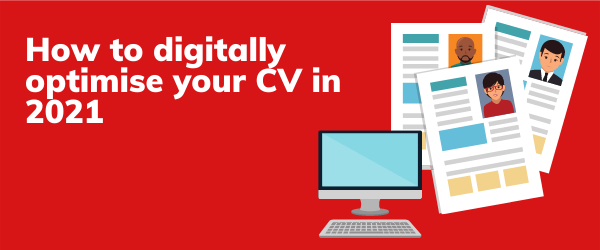You might be perfect for a job, but if your CV isn’t optimised for an ATS (applicant tracking system), it may not even get read.
The popularity and availability of ATS software means many organisations are now using this technology to filter through high volumes of applications in 2021. For jobseekers, this means that it’s now especially important to make sure your CV is digitally optimised and attractive to bots so you don’t slip through the cracks.
Three Whiskey‘s Recruitment Director, Derek Walters has compiled a list of tips to digitally optimise your cv to make a change in career.

What is ATS?
An applicant tracking system is a software application that handles recruitment and hiring needs, electronically. It’s similar to CRM (customer relationship management) systems but designed for recruitment tracking purposes.
In many cases, this software filters applications automatically based on given criteria, such as keywords, skills, former employers or years of experience.
This has created a need for employees to optimise their resumes in a similar way to how you might optimise a webpage for SEO; to make sure the format, keywords and headings are a match for what you anticipate the bots may be looking for.
Luckily, so long as you have a good understanding of the industry you want to enter and job role you’re hoping to get, you’ll be able to adapt your CV to have the highest possible chance of making it past this pre-employment screening process. Of course, this is only one step of the recruitment process, but it’s an important one, and becoming even more important as increasing numbers of organisations look to streamline their recruitment process in this way.
So how can you do it? Our Recruitment Director Derek Walters shares 5 of his best tips for optimising your resume for ATS.
1. Choose the right keywords to optimise your cv
ATS software wants to find the applicants with the most relevant experience. To do this, the software scans CVs looking for industry-specific keywords.
Unfortunately, there’s no interpretation when it comes to bots. If you don’t use exactly the right words (or if there’s a typo), you may not make the cut.
So, for example, if you’re a nurse and you know your potential employer is looking for someone who specialises in ‘infection control’, make sure you include those words on your CV. Don’t rephrase or leave it out, anticipating that you’ll be able to explain your experience in greater detail when you have your interview. Including specific keywords will give you a greater chance of getting to that all-important in the first place interview, so don’t leave them out.
Tips: You can find hints in the job description itself. Look to see which keywords they’ve included and paste those into your CV.
2. Highlight your skills and experience
ATS criteria will be clearly defined, so it’s important to not be too general when it comes to laying out your skills and experience.
‘Team player’ and ‘good communicator’ are useful skills, but are likely too generic for employers to search for. Instead, highlight the specific skills the company will be looking for, or industry-specific qualifications that are in demand.
3. Clean up your formatting
When it comes to formatting, ATS software responds best to simplicity. That means graphics, logos and fancy text boxes are a big no-no. So if you’ve decided to include some of your most important information in a complex format or infographic, think again. This will only confuse the bots.
Get rid of the frills and focus on the facts. Clear typesetting, concise headings, image-free.
4. Talking of headings…
An ATS will scan your CV for relevant keywords and then categorise them in relation to the headings they come under. This means it won’t understand headings that aren’t already in its database, so stick to standardised variations like ‘Work Experience’, ‘Employment History’ or ‘References’.
Creativity is a great way to set your CV apart, but be aware that it might put you at a disadvantage with ATS – especially when it comes to headings. Headings with playful phrasing, or extra, atypical sections like ‘My Interests’, may end up being completely overlooked by a software that can’t recognise it.
5. Be natural
All this might make you feel like you have to be a completely impersonal robot in order to get recognised by ATS, but that isn’t true. Remember that the goal is to reach human eyes, eventually, so don’t throw all personality out the window.
Also, don’t make the mistake of keyword ‘cramming’ or trying to trick the system in other ways. This will be painfully obvious once your CV makes it to a person, and they’ll be the ones who have the final say on whether you actually get the job.
The key to optimising your CV in 2021 is to stick to the facts. Because facts are facts to everyone, whether they’re made of computer code or flesh and blood. Creating a CV that’s factual and tidy will make it attractive to both man and machine.
Three Whiskey are members of the CMA. Find out more about their work on their member page.






